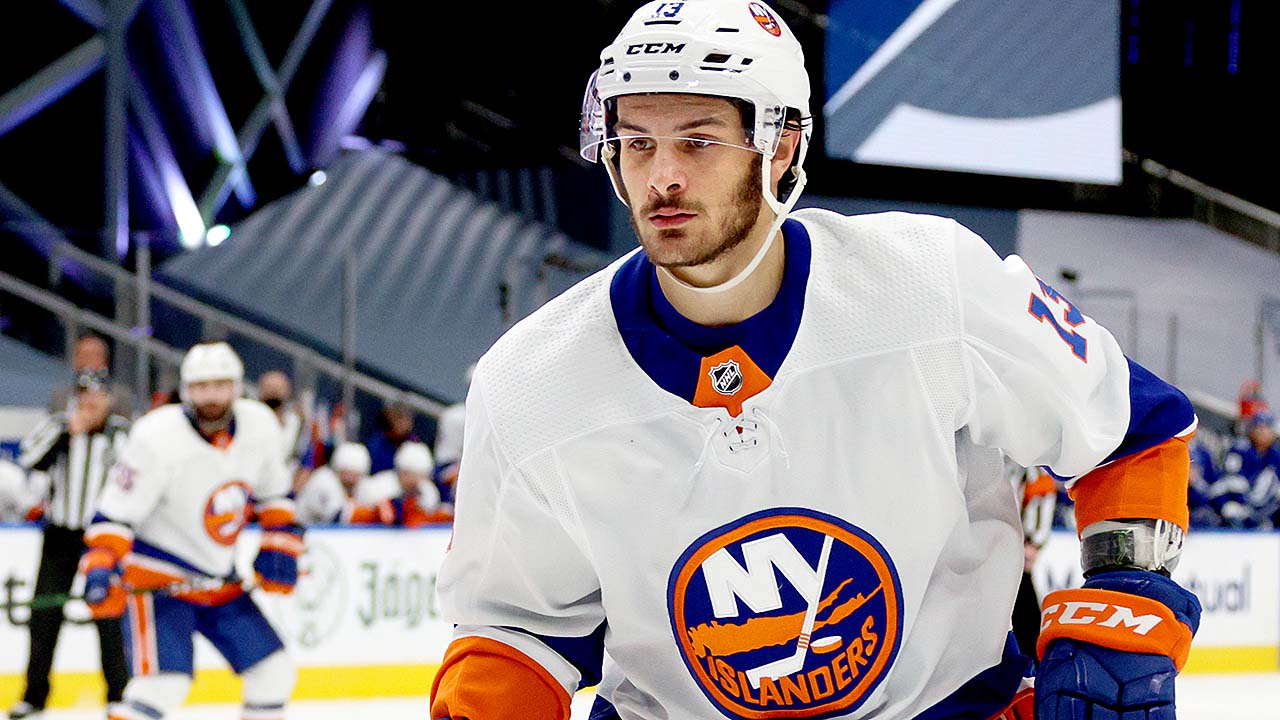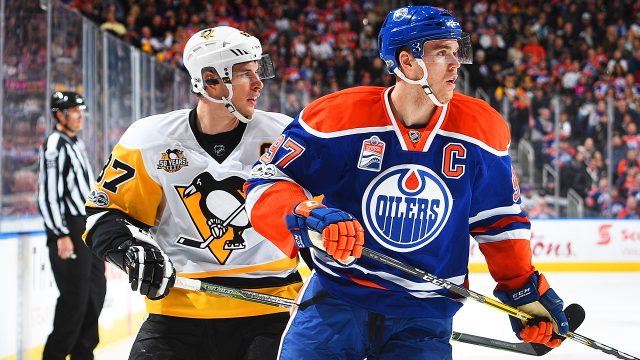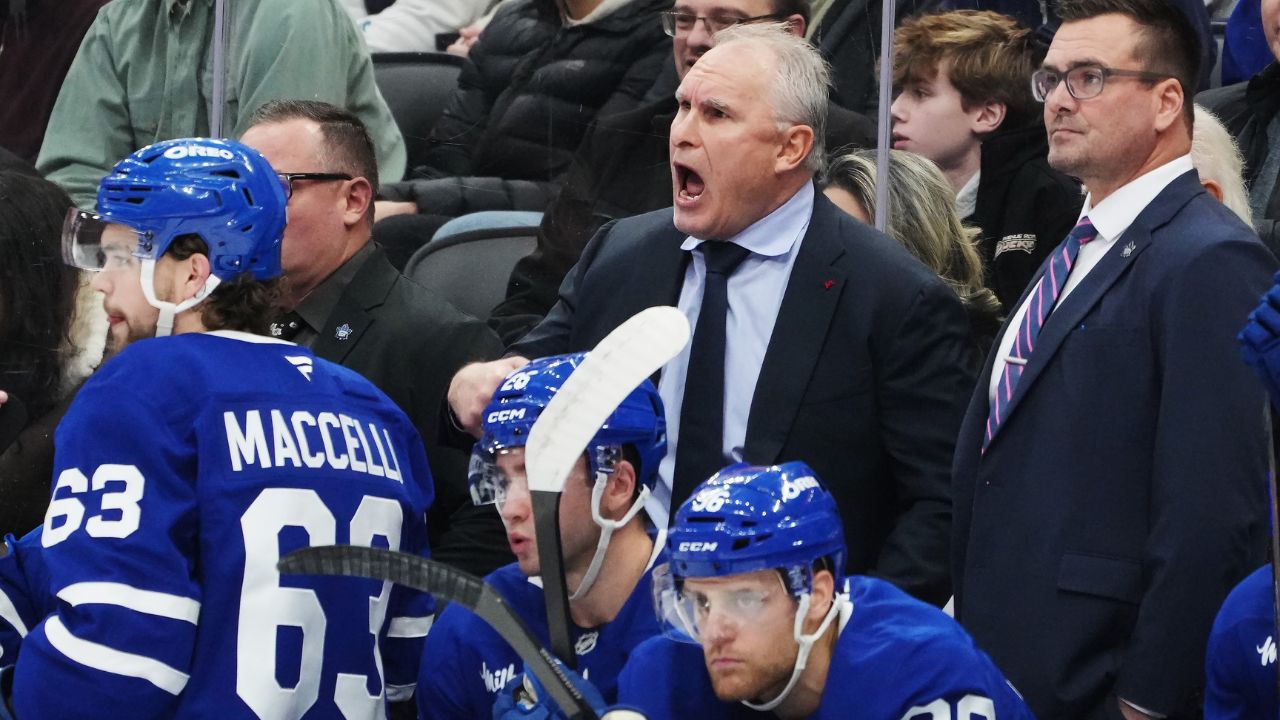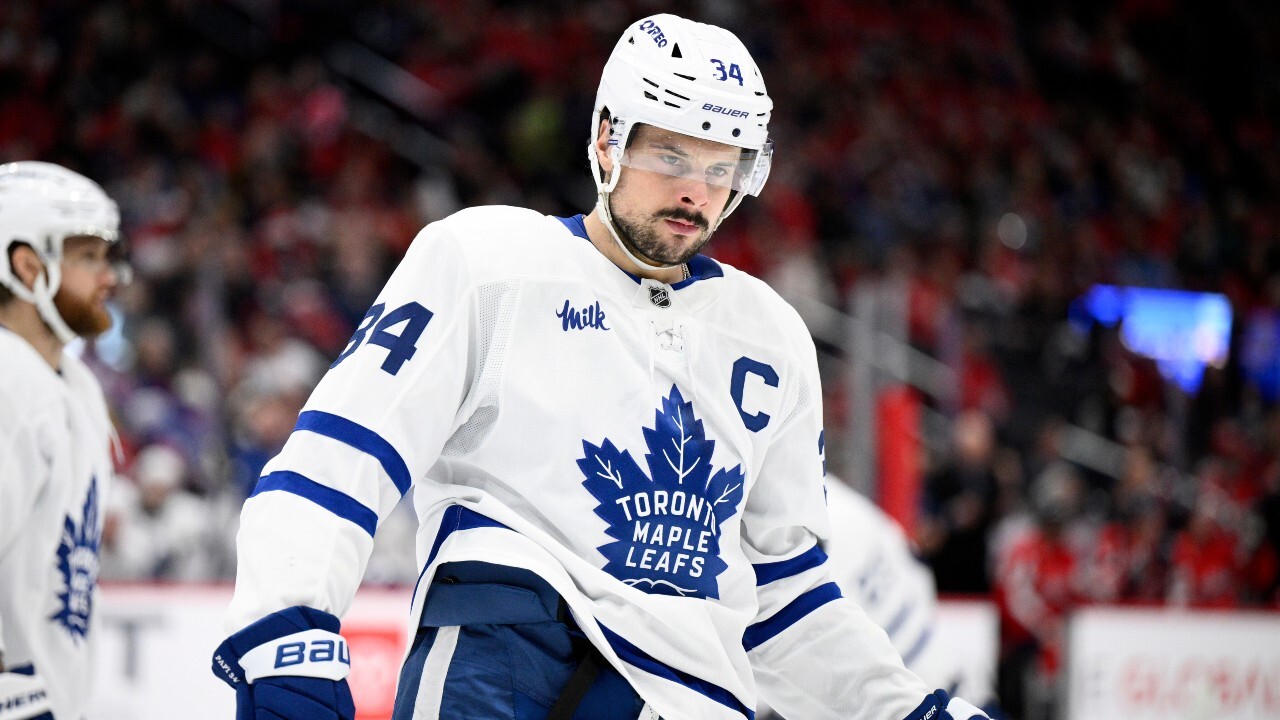
The core of the NHL’s off-season seems to be through — the draft is in the books, the majority of the biggest unrestricted free agents have chosen their new threads, and the quiet of summer (winter?) is setting in.
But aside from business as usual, there’s still one league-altering potential hanging overhead. While focus shifts from the UFAs to the RFAs — with every marquee name aside from Mike Hoffman already inked — so too comes the renewed intrigue of NHL offer sheets.
Long one of the most interesting tools at general managers’ disposal, the question of whether or not any GM will be bold enough to roll the dice on an offer sheet has become an annual tradition. On one hand, it’s rarely ever happened — though it has, with Shea Weber and Ryan O’Reilly signing offer sheets within the past decade and Sebastian Aho doing so just last year. On the other, the possibilities each off-season are too tantalizing to ignore.
There’s particular interest this time around because of a tidbit dropped by former Kings assistant GM Michael Futa during his foray as part of Sportsnet’s NHL Draft coverage earlier this month, one concerning the New Jersey Devils.
“I think they’re another team that’s primed for an offer sheet,” Futa said during that early October broadcast. “And I can tell you that because I did not get the job as general manager there and it was a big part of the interview, talking about how much they wanted to give out an offer sheet.”
So, is Devils GM Tom Fitzgerald on the clock to send an offer sheet in the direction of one of this year’s elite RFAs? Let’s take a look at what he or any other GM would have to have at his disposal to make it work.
How offer sheets work
First, a brief review of the process. A restricted free agent is eligible to receive an offer sheet if they have received a qualifying offer but have not signed (if they aren’t qualified, they become a UFA), or are not going to arbitration (if they are going to arbitration, they must see that process through with their club, and will become a UFA if their team walks away from the arbitrator’s decision).
A player who receives an offer sheet must make the decision to sign it to actually spur the process into action — if they do, their original team has seven days to match the offer or accept the opposing team’s compensation (which varies depending on the average annual value of the offer sheet). Here’s what that looks like for 2020, per the league:

The haul required to be sent to the club whose player is being poached makes clear the stakes of going the offer-sheet route. That only one of the nine offered over the past two decades hasn’t been matched by the player’s team throws another wrench into the mix.
But the prospect of landing a player at the level of the top RFAs available at the moment, and the cap reality of some of the clubs housing talented RFAs means the potential for an offer sheet is certainly still on the table.
That said, let’s dive into those options. We’ve divvied up the candidates into tiers, as while it’s intriguing to imagine a marquee name potentially switch jersey colours, there’s plenty of opportunity, too, for a team with extra cap space to go after a quality player on a club with little financial room to work, capitalizing on that discrepancy.
Tier I
Mathew Barzal, New York Islanders
While last year’s class was chock full of superstars, this year’s centres around one RFA who could have a franchise-altering impact on any club in the league. Barzal’s coming off three straight 60-point efforts, his finest campaign seeing him amass 85 as a rookie, and his ceiling still seems far off in the distance. One of the most dynamic offensive minds in the game, with speed to rival Connor McDavid and elite hands to match, the sky’s the limit for the 23-year-old centreman.
Watch one shift of Barzal’s and his potential to get even better down the line is clear, and don’t sleep on the fact he’s excelled offensively in a defence-first system — and after watching his club’s best player walk out the door after his rookie year.
In March, GM Lou Lamoriello said the Islanders intend to match any offer sheet that comes Barzal’s way, and with the centreman likely to land near $9 million per year, it’s a fair bet anything within that second-highest compensation bracket ($8.73 million to $10.91 million) wouldn’t be enough to pry Barzal off of the Island.
The question is whether there’s a club out there willing to go one bracket higher, above $10.9 million per year. That would trigger a compensation package of four first-round picks, and more importantly, would put pressure on the Islanders to make room for their young pivot. As of now, Lamoriello has roughly $8.9 million in cap space to work with, per CapFriendly. The team already parted ways with talented defenceman Devon Toews to create some space. Does a $10.9-million AAV for Barzal mean the Islanders have to lose another piece off the roster? If so, is that enough for the team to simply let Barzal walk and take the four picks?
Speaking of Fitzgerald, the Devils have a hefty $17.2 million in cap space to work with. They have a pair of RFAs to re-sign themselves, most notably netminder Mackenzie Blackwood, but seemingly have all they need to make a bid for Barzal should they want to bolster their star-studded centre depth. Or there’s Steve Yzerman’s Red Wings, who have the most cap space in the league at the moment ($18.7 million). Detroit has some key RFAs to deal with themselves, too, but there’s no question the addition of Barzal would be a game-changer for the rebuilding club, who recently added Vladislav Namestnikov as their best option behind Dylan Larkin.
Tier II
Anthony Cirelli, Tampa Bay Lightning
This is where things truly get interesting. While the Islanders giving up Barzal would need to be more of a choice by the team than anything else, the Lightning simply might not have much of a choice to make if they’re forced into a similar situation with their own RFAs. The Cup champs have just $2.9 million to work with and three notable RFAs to try to retain. Fitting them in at all seems impossible — doing so for even two of them if forced to pay more than they’d like seems just as unlikely.
Which brings us to Cirelli. The young pivot showed his worth during the Bolts’ championship run, but he’s quietly been doing it for years. The 22-year-old put up 16 goals and 44 points in 68 games this past season, after a 19-goal, 39-point effort through a full 82 games one year prior. More importantly, Cirelli finished fourth in Selke Trophy voting in 2020, behind only Sean Couturier, Patrice Bergeron and Ryan O’Reilly — and ahead of Mark Stone. Already an elite two-way forward with plenty of offensive skill, there’s little question Cirelli could thrive in a bigger role on a club with lesser depth.
EvolvingWild projects his next deal at roughly $5.7 million per year over six years. That already seems like a tough fit for Tampa Bay — a team pushing that to the upper end of the $4.36–$6.54-million offer sheet bracket would make it even tougher. Is there a club craving centre depth enough that they’d go slightly higher, still, into the $6.54–$8.73-million bracket?
The only forwards on the Lightning’s roster making more than $7 million are Nikita Kucherov and Steven Stamkos. Even Brayden Point, a bona fide Conn Smythe candidate during this recent run, is inked at $6.75. It’s tough to see the Lightning giving Cirelli more than that, when the alternative is a trio of draft picks and potentially keeping their other RFAs.
Mikhail Sergachev, Tampa Bay Lightning
And then there’s the other marquee Bolts RFA. On the back end, the Lightning have no less tricky a situation to navigate as Mikhail Sergachev is in the exact same position as Cirelli. The 22-year-old has become a workhorse in Bolts colours since coming over from Montreal, skating more than 20 minutes a night this past season — and upping that to 22 minutes during his club’s championship run.
A dynamic puck-mover at the highest level already, he’s potted 30 points from the back end in each of his three NHL campaigns, posting 40 in his first big-league go-round. The potential to be a No. 1 or No. 2 defenceman on a club craving more talent at the position is there.
Like Cirelli, it’s tough to see how GM Julien BriseBois fits in Sergachev at the price he’s owed. Is there a number on the higher end of the $4.36–$6.54-million bracket, or the lower end of the $6.54–$8.73-million bracket, that could force BriseBois’ hand? Victor Hedman and Ryan McDonagh, who each averaged more ice than Sergachev, sport cap hits of $7.88 million and $6.75 million respectively. The closer Sergachev’s AAV gets to those two numbers, the tougher the fit for Tampa Bay.
Throw fellow blue-line RFA Erik Cernak into the mix, too. The 23-year-old right-shot defenceman won’t command the interest or salary that Sergachev will, but depending on what happens with his fellow two Lightning RFAs, he could be an expendable commodity for the Bolts. He won’t be the solution for a team in need of a top-pairing phenom, but he can certainly slot in as a solid piece for a club looking to bolster its depth, or fill a top-four hole. Should an opposing club offer Cernak somewhere on the higher end of the $2.18–$4.36-million bracket, matching would require even more roster shuffling in Tampa Bay.
Pierre-Luc Dubois, Columbus Blue Jackets
The Blue Jackets’ cap situation is the opposite of their Sunshine State playoff rival. Columbus has $12.9 million to work with, most of which can be directed at Dubois, their No. 1 centre. But like the Barzal potential — or the actual offer sheet we saw sent Aho’s way last year — the question is whether clubs will think highly enough of the player to roll the dice anyways.
Dubois has grown into a quality pivot through his first three years in the league, posting 20 goals and 48 points as a rookie, followed by a 27-goal, 61-point breakout season in Year 2. He scored at a 60-point pace again in 2019-20 before the season was paused, finishing with 18 goals and 49 points through 70 games.
EvolvingWild projects Dubois’ next deal lands around $6.6 million per year over seven years. It seems unlikely a team comes up with a number high enough to convince the Blue Jackets to move on from Dubois, the third-highest draft pick in team history and their top offensive option. But like Montreal last year, there might be a club with so dire a need for a top-line centre that they gamble on an overpay for Dubois to try to pry him away.
Tier III
Roope Hintz, Dallas Stars
Another talented player on Cup finalist roster that might have a hard time keeping him, Roope Hintz took a promising step forward in 2019-20 with 19 goals and 33 points before the pause — on track for a 25-goal, 45-point effort had he played a full 82-game season. His performance during Dallas’ lengthy playoff run put his game on display for those who haven’t been paying attention, and there’s room for his ceiling to rise further still.
A deal for Hintz wouldn’t need to be a hefty one, though, given the Stars’ cap situation. After inking fellow young gun Denis Gurianov to a new deal, the club has just over $4 million in cap space, with Hintz their final piece to sign. That could very well be doable — a deal for $3–$4 million per year seems reasonable for the young winger.
But a club could put Dallas in a tricky spot with an offer on the higher end of the $2.18–$4.36-million bracket (requiring only a second-round pick as compensation should the Stars fail to match) or the lower end of the $4.36–$6.54-million bracket (requiring a first and a third as compensation). For any of the clubs holding the most cap space at this point in the off-season, that seems a more-than-reasonable number to pry away a talented winger like Hintz.
Ethan Bear, Edmonton Oilers
Similarly in tough when it comes to cap space, the Edmonton Oilers figure to have this problem for a fair while given the lengths of the deals signed by McDavid and Leon Draisaitl. As it stands, they have just over $730,000 available, which is a problem considering they have RFA defender Ethan Bear awaiting a new deal.
The 23-year-old had a solid 2019-20, skating a career-high 21:58 minutes per night — up to 22:37 per night in the post-season — while posting 21 points from Edmonton’s back end.
History tells us the list of suitors for a right-shot defender who’s shown flashes of elite offensive potential won’t be short. Bear’s in that group, having impressed at the AHL level, with 31 points in 52 games during his last AHL campaign, and before that too, having amassed 28 goals and 70 points through 67 games in his final year of juniors.
But even a moderate deal for the blue-liner would seem to be tough for Edmonton to match. EvolvingWild projects Bear’s next deal at around $4.7 million per year over five years. If a club in need of a right-shot defender was willing to shell out something on the higher end of the $4.36–$6.54-million bracket, matching would require more roster surgery for the Oilers.
Also important to note is the fact that Edmonton has another promising right-shot defender waiting to make his mark, in 2018 No. 10 pick Evan Bouchard. If an opposing club makes a play for Bear, does it force Edmonton to shift their focus to Bouchard?
Anthony Mantha, Detroit Red Wings
The Red Wings find themselves at an interesting place in their rebuild — not far enough along to make waves, but with enough seeds planted to cause them to be wary of committing money that may be needed later. That bring us to Anthony Mantha, the club’s 20th-overall pick from back in 2013. The big-bodied winger has three solid seasons on his resumé, finishing around 25 goals and 50 points for two seasons prior to 2019-20. Last season, he once again showed well for the portion of the season he was able to play, scoring at a 30-goal, 72-point pace (16 goals, 38 points through 43 games).
There’s no mystery about his value — he’s proven his ability to pot goals consistently at the highest level, and on a thin roster, no less. And he brings dominant size, clocking in at six-foot-five, 235 pounds.
As stated earlier, Yzerman’s club has the most cap space in the league, $18.7 million, with just RFAs Mantha, Tyler Bertuzzi (who went the arbitration route), and Dmytro Timashov to sign. That means plenty of room to ink Mantha to a new deal, regardless of the number. But Yzerman is also fresh off playing a key role in building a winner in Tampa Bay, and no doubt understands the importance of making wise financial choices long before that contender cap crunch arrives.
Detroit has had a top-10 pick in each of the past four drafts (Michael Rasmussen, Filip Zadina, Moritz Seider, and Lucas Raymond). Dicey long-term deals to longtime Red Wings was the key issue when Yzerman arrived to begin his tenure as his old club’s GM. So, if a club with room targeted Mantha with a deal well above what Detroit felt was fair, would Yzerman match, or take the draft picks and focus on his future talent, with the team far from contending any time soon anyways? A deal in the $6.54–$8.73-million bracket could make things interesting in Hockeytown.





